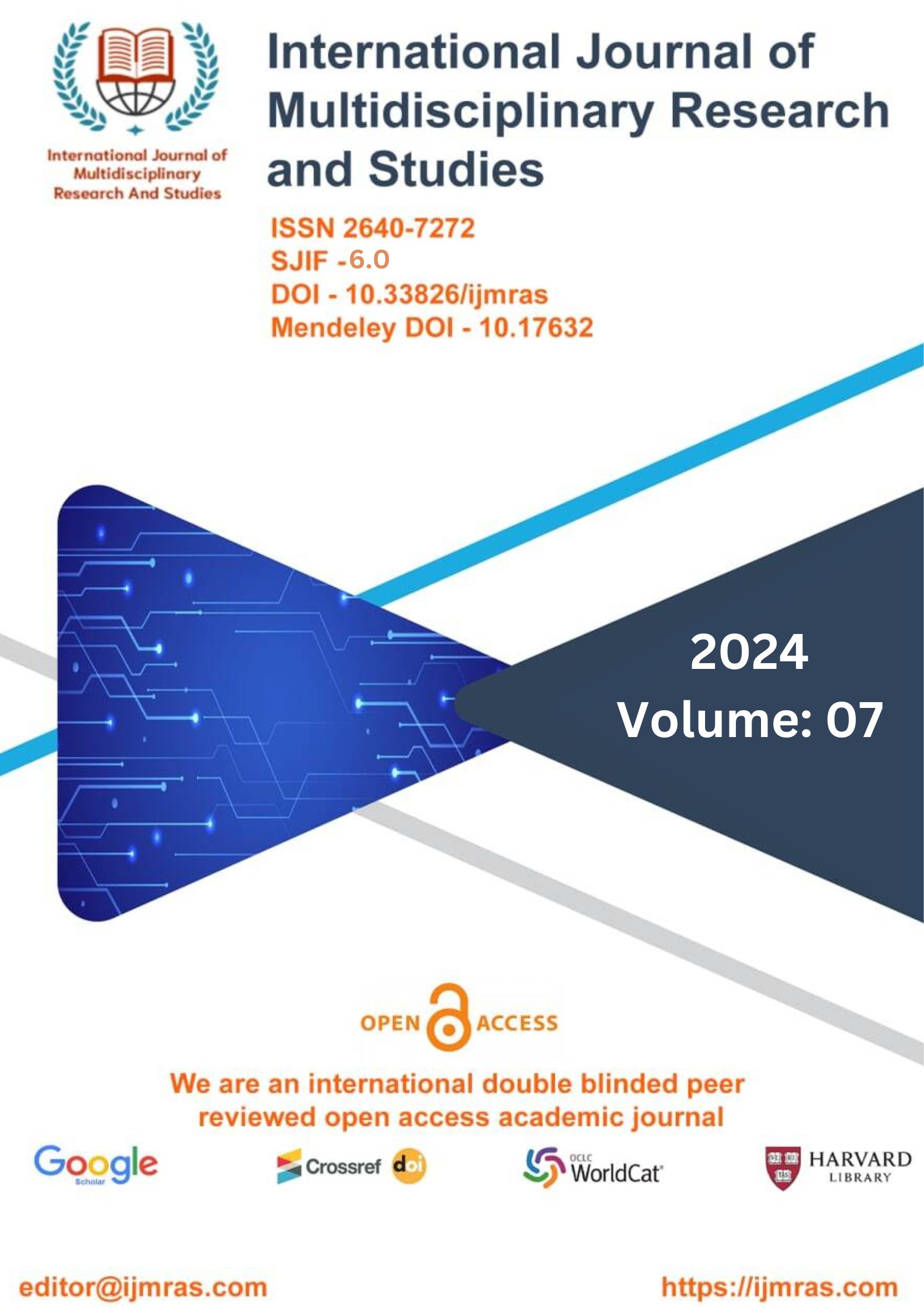Form, Material, and Color: An Exploratory Analysis of Their Significance in Traditional Chinese Design

Abstract
The goal of this research is to identify viable strategies for incorporating classical Chinese aesthetics into contemporary contexts. Designers and non-designers alike, both Chinese and not, will be polled on their thoughts on several visual design elements commonly associated with Chinese design. The result is an emphasis on the following three features: We'll examine the three pillars of traditional Chinese design—handicraft, naturalism, and design with meaning—in more depth below. Using the two sets of design standards discussed in the study, designers may employ these symbols to convey contemporary Chinese culture in their work.
Keywords
Handicraft, Naturalism, Design StandardsHow to Cite
References
Ahmad, A. (2008). In a Ahmad (Chair). Islam and the Chinese Traditional Culture. Chinese University of Hong Kong Islamic studies in China, Hong Kong, China.
Anderson, D. (1961). Elements of Design. (1st ed.). New York: Holt, Rinehart and Winston.
Anonymous. (2008). China rising. Chinese Graphics, 23(10), n/a.
Bao, Y. (2008). A Handbook of Chinese Art, Crafts, and Culture. (1st ed.). New York: Edwin Mellen Press.
Beutler, B. (2006). China's Design Influence is on the rise. Electronic Business, 32(12), 11-18.
Chinese Designs &Symbols. (2nd ed.).(1982). New York: Art Resources for Teachers & Students, Inc.
Campbell, W. (2010). Form and Visual Cues. (Master's thesis, Rochester Institute of Technology).
Chau, P., Cole, M., Massey, A., Montoya-Weiss, M., & O'Keefe, R. (2002). Cultural Differences in the Online Behavior of Consumers. Communications of the ACM, 45(10), 138-143.
Chen, A. (2011). Discovery, Inheritance and Innovation Incorporating Traditional Chinese Family Values with Residential Design. (Master's thesis, Carleton University, Ottawa, Canada).
Chen, F. (2011). Traditional Architectural Forms in Market Oriented Chinese Cities: Place for localities or symbol of culture?. Habitat International, 35, 410-418.
Chen, R. (2011). The Dao of Graphic Design — a Study of Interrelationship between the Daodejing in Chinese Daoism and Graphic Design. (Master's thesis, Rochester Institute of Technology).
Cheung, H. (2011). Representing Sight and Sound in Design Media: A Cyclical Time-based Model. (Doctoral dissertation, Arizona State University).
Chi-Cheng, P., Tushar, H., & Rajit, G. (1998). Evaluation of Virtual Reality Interface for Product Shape Designs. IIE Transactions, 30(7), 629-643.
Clarke, D. (2011). Chinese Art and Its Encounter with the World. (1st ed.). Hong Kong: Hong Kong University Press.
Clunas, C. (1988). Chinese Furniture. (1st ed.). New York: Bamboo Publishing.
Clunas, C. (2009). Art in China. (2nd ed.). USA: Oxford University Press.
Clunas, C., Kerr, R., & Wilson, V. (1911). Chinese Art and Design: Art Objects in Ritual and Daily Life. (1st ed.). New York: overlook hardcover.
Cohen, D. (2006). A Visual Language: Elements of Design. (1st ed.). London: Herbert Press.
Crouch, C. (2010). Contemporary Chinese Visual Culture: Tradition, Modernity, and Globalization. (1st ed.). Amherst, N.Y.: Cambria Press.
Currey, E. (2003). A School for the Chinese Martial Arts. (Master's thesis, University of Maryland, College Park).
Daneshfar, E. (2011). Ethical and Traditional Concerns in Contemporary Japanese Design. Asian Culture and History, 3(1), 115-127.
Demirkan, H., & Afacan, Y. (2012). Assessing Creativity in Design Education: Analysis of Creativity Factors in the First-year Design Studio. Design Studies, 33, 262-278.
Deng, X. (2009). Consumer Response to Visual Aspects of Packaging and Product Design. (Doctoral dissertation, University of Pennsylvania).
Evans, J., & Mathur, A. (2005). The Value of Online Surveys. Internet Research, 15(2), 195-219.
Evans, P. (2008). Exploring the Elements of Design. (2nd ed.). Clifton Park, NY: Thomson/Delmar Learning.
Fan, F. (2006). A Cross-Cultural Design Pattern: Chinese Modern Design. (Master's thesis, West Virginia University).
Fan, X. (2011). Industrial Design: Contrasting the United States and Chinese Methods. (Master's thesis, University of Cincinnati).
Folkes, V., & Matta, S. (2004). The Effect of Package Shape on Consumers‘ Judgments of Product Volume: Attention as a Mental Contaminant. Chicago Journals, 31(2), 390-401.
Fung, J. (2000, Apr 28). Nuosu: a Chinese Minority that's not really Chinese. Northwest Asian Weekly, p. b3.
Giard, J. (2009). Designing: a Journey through Time. (1st ed.). Phoenix, AZ: The Dorset Group.
Giard, J. (2005). Design FAQs. (1st ed.). Phoenix, AZ: The Dorset Group. Gong, J. (2008). Chinese Traditional Folk Pattern and Modern Graphic Design. Asian Social Science, 4(2), 65-70.
License
Copyright (c) 2024 ZHANG LEI, DR. ZULKARNAIN A. HATTA

This work is licensed under a Creative Commons Attribution 4.0 International License.
Individual articles are published Open Access under the Creative Commons Licence: CC-BY 4.0.




